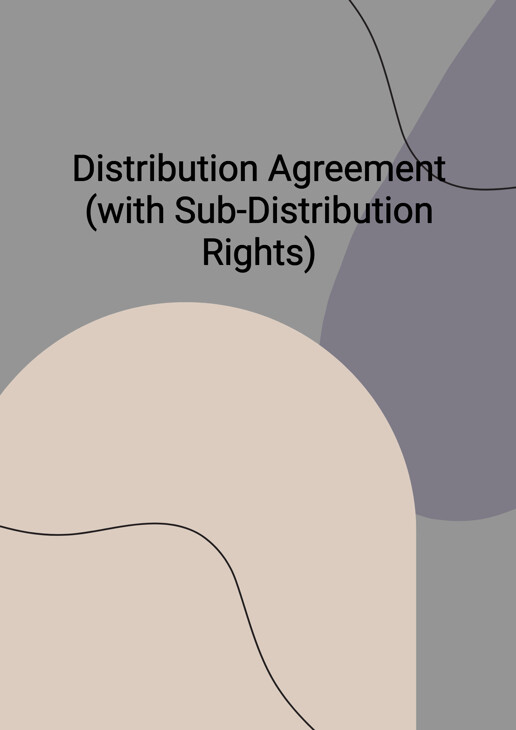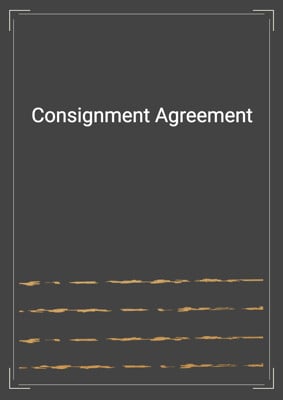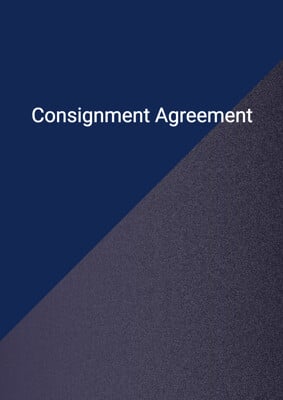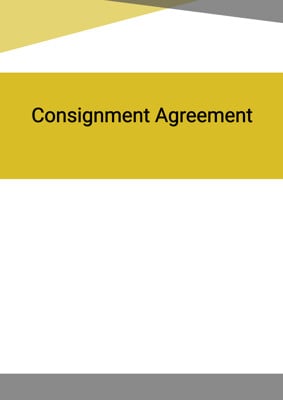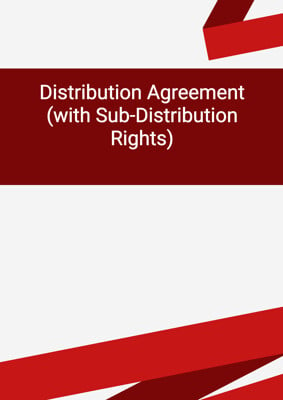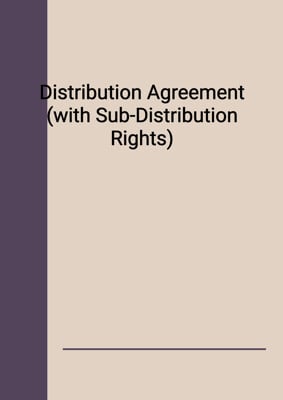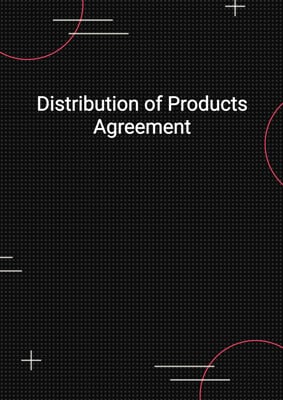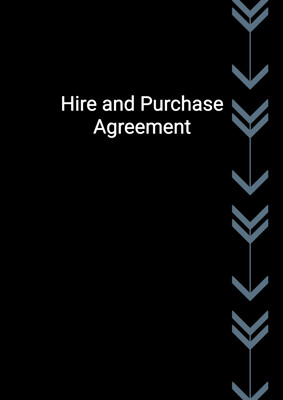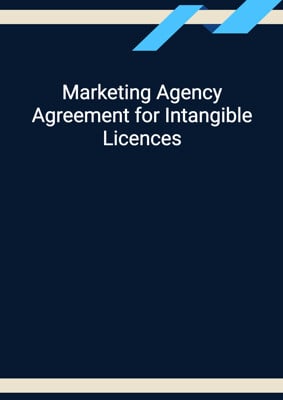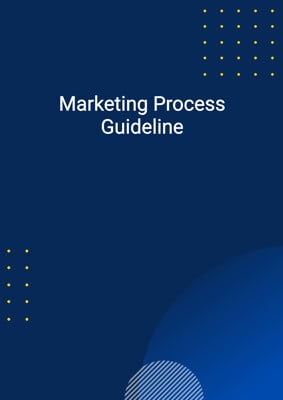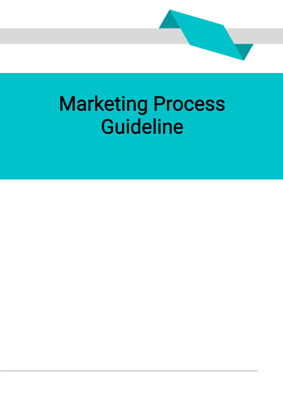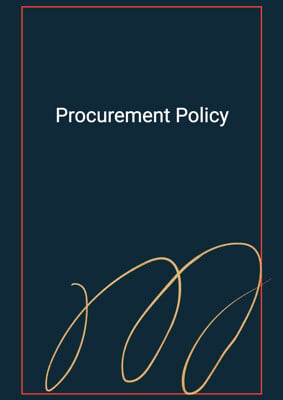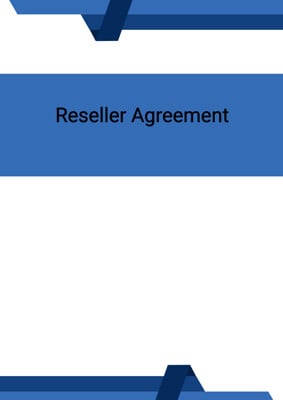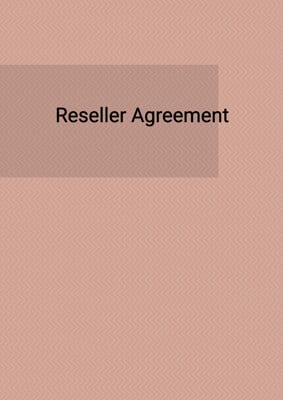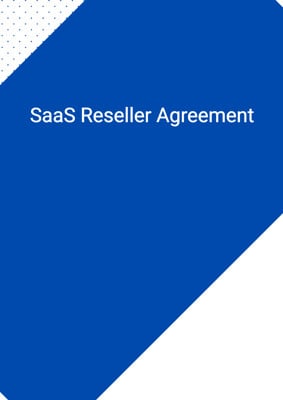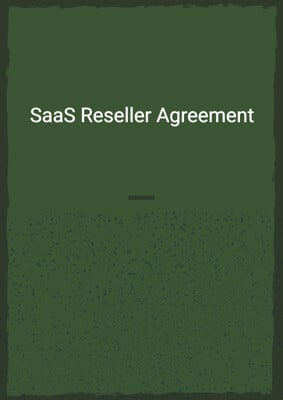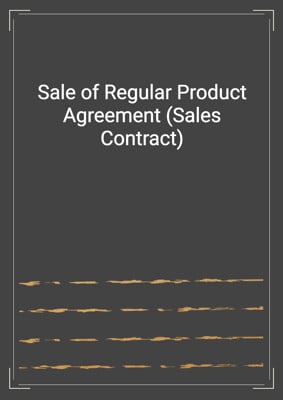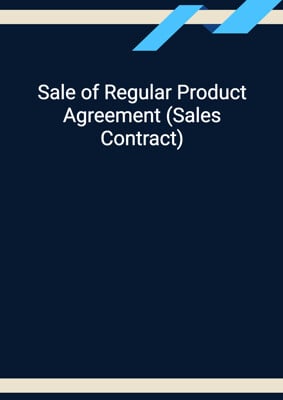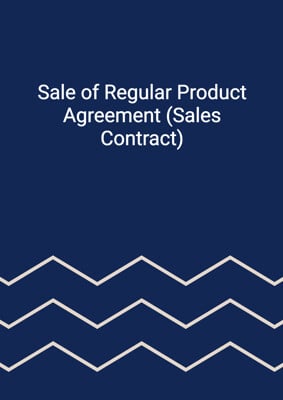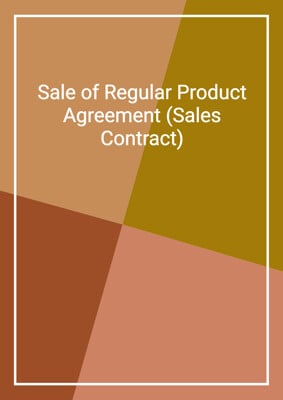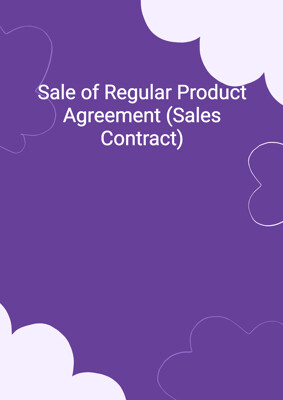How to Tailor the Document for Your Need?
01
Create Document
Fill in the details of the parties. You can click the "Fill with Member’s Information" button to complete it with information saved to your account.
02
Fill Information
Please fill in any additional information by following the step-by-step guide on the left hand side of the preview document and click the "Next" button.
03
Get Document
When you are done, click the "Get Document" button and you can download the document in Word or PDF format.
04
Review Document
Please get all parties to review the document carefully and make any final modifications to ensure that the details are correct before signing the document.
Document Preview
Document Description
The Distribution Agreement (with Sub-Distribution Rights) is a legal document that establishes a contractual relationship between two parties: the Company and the Distributor. The agreement is entered into with the aim of extending the area in which sales are made to a specific territory. The Company wishes to appoint the Distributor as its exclusive distributor of products for certain applications in the territory, and the Distributor has agreed to accept such appointment subject to the terms and conditions of the agreement.
The agreement begins with an interpretation section, which defines key terms used throughout the document. It also includes a section on the appointment and term, which specifies the duration of the agreement and the exclusivity of the Distributor's rights. The Distributor is granted the exclusive right to distribute the products within the territory, and the Company may distribute the products either itself or by appointing third parties on a non-exclusive basis.
The agreement also covers the purchase of products by the Distributor. The Distributor is required to buy its entire requirements for products from the Company on the Company's terms of sale and at the Company's distributor list price. The Company is under no obligation to supply any products to the Distributor until it has received and accepted an order from the Distributor that complies with its terms of sale.
The Distributor is responsible for selling the products in the territory. It is required to sell the products on its own behalf and not on behalf of the Company. The Distributor must use its best efforts to publicize and promote the use of the products throughout the territory and obtain orders for them. It is also responsible for providing a prompt and efficient after-sales service for customers to whom it has sold products in the territory.
The agreement includes provisions on confidentiality, intellectual property, liability, termination, force majeure, and general terms. It also includes schedules that provide additional details on products, territory, trademarks, stock requirements, and purchase targets.
Overall, the Distribution Agreement (with Sub-Distribution Rights) is a crucial document that outlines the rights and responsibilities of both the Company and the Distributor in the distribution of products within a specific territory. It ensures that both parties are aware of their obligations and can work together effectively to promote and sell the products.
How to use this document?
1. Provide information: Enter the Company's and Distributor's information in the agreement, including their principal place of business. This ensures that both parties are clearly identified.
2. Specify territory: Clearly define the geographical area in which the Distributor has exclusive rights to distribute the products. This ensures that both parties understand the boundaries of the territory.
3. Establish purchase terms: Agree on the terms of purchase, including pricing, payment terms, and any applicable taxes or duties. This ensures that both parties are aware of the financial aspects of the agreement.
4. Define distributor's duties: Clearly outline the Distributor's responsibilities, such as promoting and selling the products, providing after-sales service, and complying with the Company's instructions. This ensures that the Distributor understands its obligations.
5. Address intellectual property: Specify the rights and obligations of both parties regarding intellectual property, including trademarks and patents. This ensures that both parties understand their rights and responsibilities in relation to intellectual property.
6. Include termination provisions: Establish the conditions under which either party can terminate the agreement, such as breach of contract or insolvency. This ensures that both parties have a clear understanding of the circumstances that may lead to termination.
7. Consider force majeure: Include provisions that address the impact of unforeseen events, such as natural disasters or political unrest, on the performance of the agreement. This ensures that both parties are aware of their rights and obligations in such situations.
8. Ensure confidentiality: Include provisions that protect the confidentiality of any proprietary information shared between the parties. This ensures that both parties understand the importance of maintaining confidentiality.
9. Address liability: Specify the extent of liability for each party in case of any damages or losses arising from the performance of the agreement. This ensures that both parties understand their potential liabilities.
10. Seek legal advice: It is recommended to seek legal advice when drafting or entering into a distribution agreement to ensure that all legal requirements are met and that the agreement adequately protects the interests of both parties.
Not the right document?
Don’t worry, we have thousands of documents for you to choose from:
